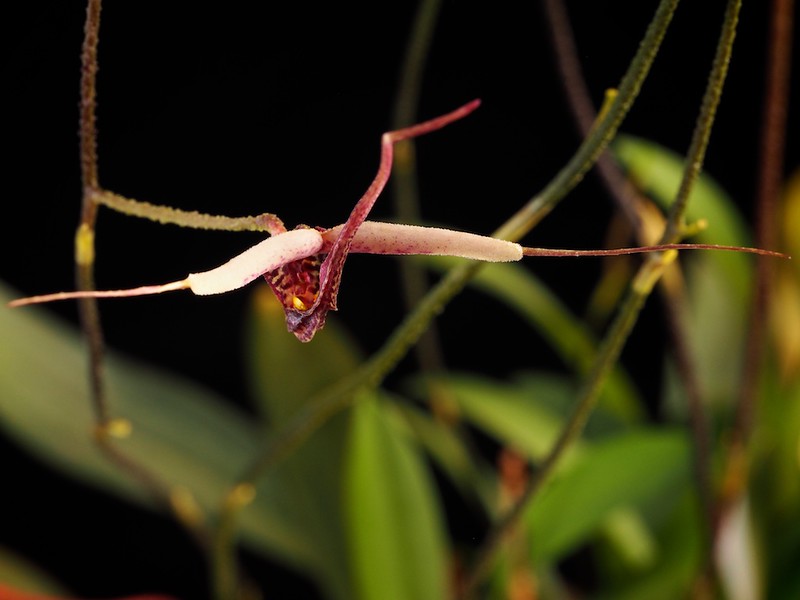
The flowers of species in this genus are marvelously "odd". The main function of flowers is to attract pollinators, and examination of floral parts generally reveals functional beauty. But with this genus, I have no idea why the flower is shaped like this.
The flowers of Scaphosepalum are up-side-down compared to majority of orchids. This is called non-resupinate, but actually, Scaphosepalum has the up-side-up correctly. The majority of orchids have the up-side-down flowers (called resupinate flowers), so the Scaphosepalum flowers are technically up-side-up. Kind of confusing, isn't it?
A bit of basic floral morphology of orchids. All orchids have 3 sepals and 3 petals (although sometimes these were fused). In a typical orchid flower, the top most sepal is called a dorsal sepal, and the other two spreading downward are lateral sepals. So imagine a Phalaenopsis flower and overlay a clock on it. At 12 o'clock, there is a dorsal sepal. At 4 and 8 o'clock, there are two lateral sepals. The petals are at 2 and 10 o'clock. The lip (labellum), which usually look different from the other two petals, is the third petal. A Scaphosepalum flower is up-side-down (compared to other orchids) because the two antenna-like (or wing-like structure) with the whitish pads at the base are the lateral sepals, and the stick (tongue) sticking out in the front is the dorsal sepal.
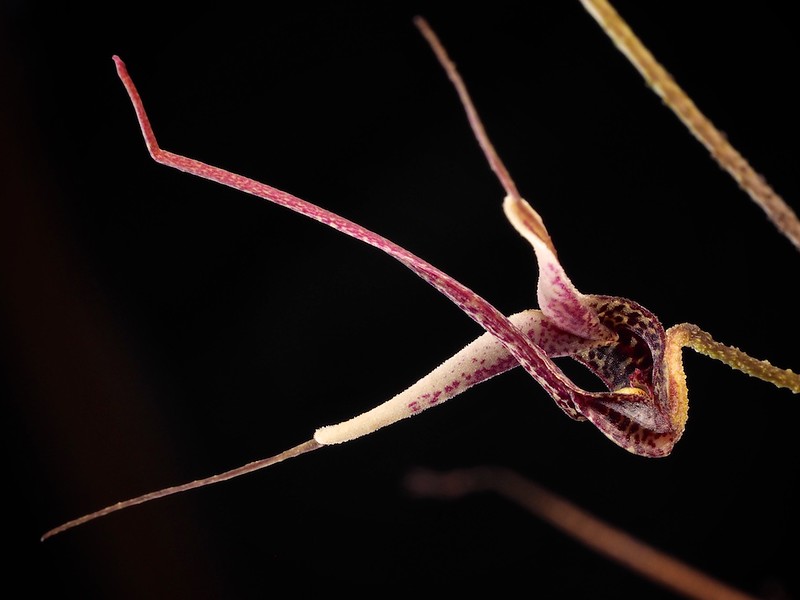
The following paper presents a study of functions of the Scaphosepalum flowers:
Pridgeon, A. and W. L. Stern. 1985. Osmophores of Scaphosepalum (Orchidaceae). Botanical Gazzette 146(1): 115-123. (here is a link to an abstract)
The pollinator of Scaphosepalum is speculated to be flies (dipterans) as with many other species in subtribe of Pleurothallidinae. One of the main tool to attract flies is odor. Some plants have tissues specialized to produce fragrance/odor, which is called osmophores. In Scaphosepalum, the sepals are the main part where fragrance is produced. In some species, the fragrance producing cells are located in the pads of the lateral sepals (antennae), but in other species, it is located on the dorsal sepal (tongue) or at both. So the thickened pad on the antennae may be contributing to fragrance production, but we still don't know the functionality of the odd shape.
The white pads in the photo with purple spots in the photo below are likely to be the location of fragrance production. I couldn't smell anything, but flies could smell something which we can't.
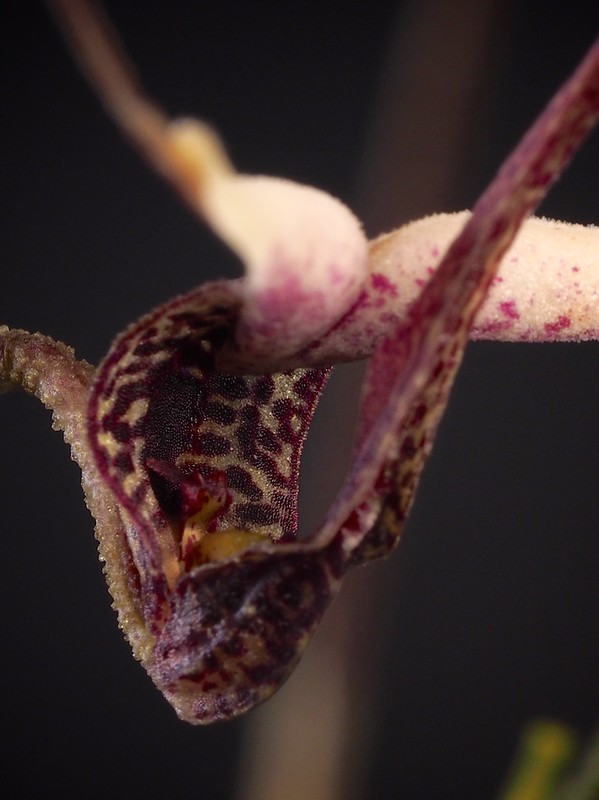
It is pretty difficult to capture the odd shape of the flower in 2-dimentional photos. So I'm trying to show the flower from multiple directions.
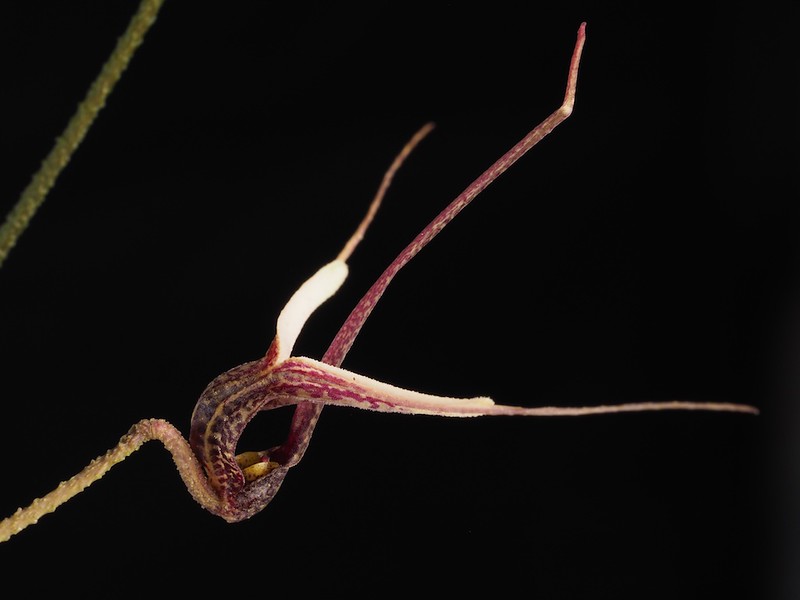
Two small yellow parts in the photo below (at the base of the "tongue", inside and bottom of the "mouth") are the petals.
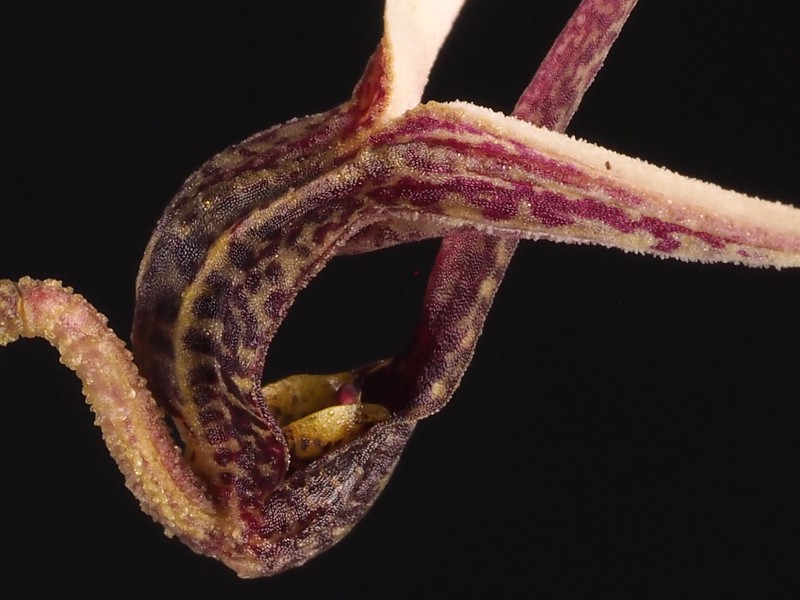
It keeps making new flowers from the old inflorescences.
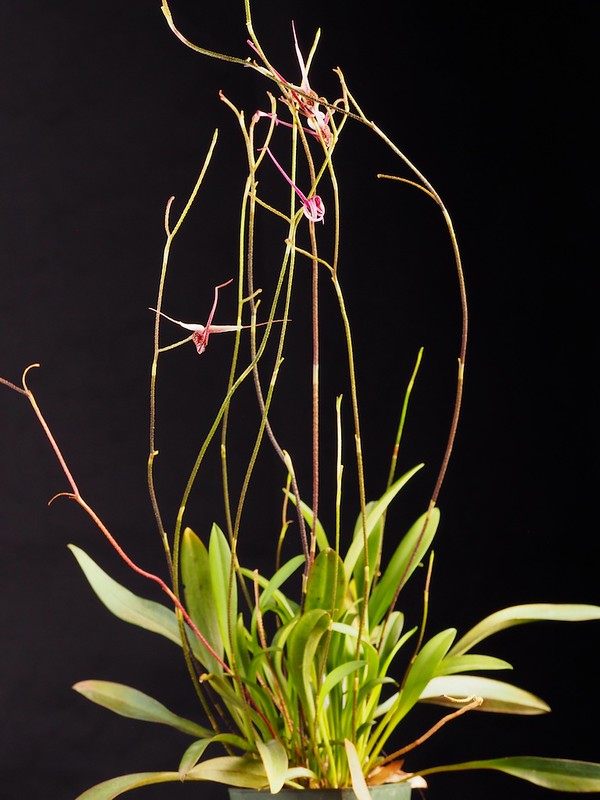
I got this Scaphosepalum gibberosum from Ecuagenera although this species is supposed to be native to Colombia. It seems to be a relatively easy grower. I keep it in an enclosure with moderately high humidity (at least 70%RH). The daily max/min temperature is 24/18C (75/65F) in the summer and 18-21/10-13C (65-70/50-55F) in the winter. It seems to be slightly happier with the cooler temperature. It appears to be ok with relatively weak light (maybe Phalaenopsis level). You can find more detailed culture tips from the following article about Scaphosepalum:
Auburn, M. 2009. Some intriguing Scaphosepalum The Orchid Review, December: 214-221.
Comments
Post a Comment